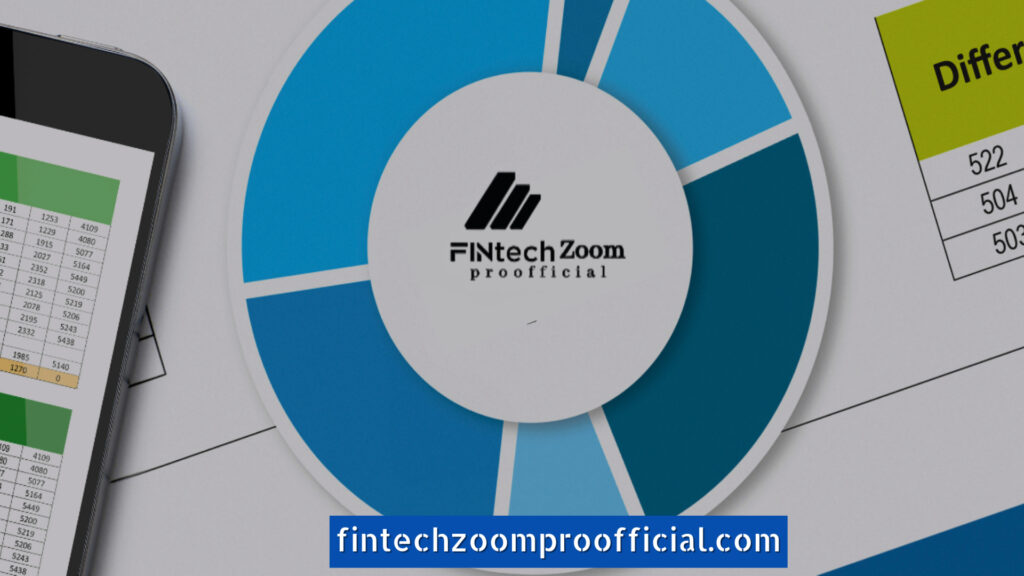
Table of Contents
In today’s fast-paced financial environment, trusting a close eye on company finances is serious. Correct and efficient financial tracking confirms smooth operations and informed decision-making from small to large tech businesses. This article explores the growing site of financial tracking technologies and compares them with traditional financial methods to understand their unique rewards, limits, and long-term impact.
The Evolution of Financial Tracking
Traditional Financial Tracking Methods
Before the rise of digital technology, businesses relied heavily on manual offices. These systems, though cost-active, offered several challenges, such as human error, a lack of real-time data, and time overriding resolutions.
- Manual office: Companies continued financial records through handwritten books and earnings.
- Excel databases: The introduction of essential software like Excel provided a better structure for recording financial data, but it still required a lot of manual input.
One fundamental problem with these traditional methods is that they don’t provide the skill to quickly process large amounts of data. Manual financial tracking methods were particularly labor-intensive for financial services technology companies that needed to handle multiple clients’ data simultaneously.
Introduction of Financial Tracking Technologies
With technological advancement, financial technology companies have developed classy tools for managing financial data. These tools automate much of the tracking process and provide real-time data insights, attractive productivity, and accuracy.
- Cloud-based systems: Cloud platforms allow companies to store and track financial data strongly, offering openness from anywhere in the world. This system reduces the need for manual entries and decreases errors.
- Artificial Intelligence (A.I.) tools can predict cash flow issues, analyze financial health, and spot fake activities, making them attractive financial monitoring units.
Case Study: TechCorp, a global startup, accepted AI-driven financial tracking software to automate its reporting processes. Within six months, they saw a 25% reduction in operating costs due to reduced mistakes and updated resolutions.
Comparing Financial Tracking Technologies and Traditional Methods
Real-time Data vs. Delayed Reports
One of the most significant rewards of financial tracking technologies is the ability to provide real-time data. This skill allows companies to make instant results based on correct and up-to-date information. In contrast, traditional financial tracking methods often result in delays, particularly when industry with financial statements of tech companies that may require manual understanding before being finalized.
- Real-time tracking: Financial technologies like cloud-based software offer direct cash flows, balances, and transaction updates.
- Delayed manual reports: Old-style methods often require waiting for financial statements to be manually resigned, creating lags that hinder timely decision-making.
Accuracy and Efficiency in Financial Tracking
Financial tracking technologies provide significant improvements over traditional methods when it comes to accuracy. Automated systems decrease human error, which is a common issue in manual offices, especially in complex settings like financial technology companies.
- Automation: Automated tools calculate figures and detect discrepancies without the risk of human error.
- Manual entries: In traditional methods, data entry errors can lead to incorrect financial statements, which are particularly difficult for tech companies dealing with large volumes of contacts.

Cost Considerations
While financial technologies bring accuracy and competence, they come with an open cost. Purchasing software, training staff, and keeping these systems can be expensive, particularly for small businesses. On the other hand, old-style methods, though less efficient, are often more cost-effective and require minimal software or computer hardware investment.
- Technology costs: Initial investment in financial tracking software can be high-priced for small businesses.
- Traditional costs: Manual systems, like tables and records, are low-cost but come with unseen expenses, such as improved work time.
Security and Fraud Prevention
One of the most critical concerns for any financial system is security. Financial technologies are designed with advanced security protocols, including encryption and multi-factor authentication. These systems also support fraud detection tools, which make it easier for companies to identify unusual transactions through financial monitoring units.
- Security protocols: Cloud-based systems are more secure than physical records can be lost or damaged.. stolen.
- Fraud detection: AI-powered systems can identify suspicious activity and alert companies to possible financial fraud.
Flexibility and Customization
While financial tracking technologies are highly efficient, they may sometimes be plastic for some businesses. Old-style methods, such as physically collected financial statements, offer customization that is difficult to achieve with digital tools, primarily for unique business models or non-standard contacts.
- Technology’s rigidity: Off-the-shelf financial software may not be customizable enough for particular economic tasks.
- Manual customization: Traditional methods allow businesses to tailor financial statements to their needs.
Counterarguments and Refutations
Limitations of Financial Tracking Technologies
While financial technologies offer many benefits, they do have their limits. It can be expensive to implement these systems. keep, particularly for small businesses or setups. Also, over-trust technology could lead to active troubles in the event of technical issues.
The long-term benefits of using these technologies far outweigh the initial costs, especially as businesses grow and require more classy tracking systems.
Case Study: Implementation of Financial Tracking Technologies
Real-World Example of Financial Technologies in Action
X.Y.Z. Tech, a mid-sized financial services company, transitioned from a manual office to a cloud-based financial tracking system. First, the company needed help with the high application and staff training costs; after one year of using the system, X.Y.Z. Tech reported a 30% discount in mistakes and a 40% development in output. The financial monitoring unit inside the system helped them flag fake contacts early, saving the company millions in possible deaths.
Also Read: Top 5 Regulatory Pitfalls in Financial Industry Regulatory Authority News for 2024
Conclusion
The Future of Financial Tracking
The current debate between financial tracking technologies and traditional methods concerns cost, productivity, and customization. While traditional methods may still be valuable for small trades, the clear benefits of real-time data, improved security, and automation offered by financial tracking technologies make them the ideal choice for growing companies, mainly in the tech industry.
As financial technology companies continue to transform, we can expect financial tracking to become even more automatic and joined with other business roles, making it calmer for companies to manage their finances in a gradually complex global market.

F.A.Q.s: Financial Tracking Technologies vs. Traditional Methods
What are financial tracking technologies?
Financial tracking technologies are digital tools and systems that help businesses screen, record, and analyze their financial contacts in real time. These tools often include cloud-based software, artificial intelligence (A.I.), and automated tracking systems to ensure correct financial writing and decision-making.
How do financial tracking technologies differ from traditional financial methods?
Traditional methods, such as manual office and tables, require manual input and are prone to mistakes and errors. Financial tracking technologies power many processes, provide real-time data, lessen human error, and often include fraud-finding and security features.
What are the benefits of using financial tracking technologies?
Some benefits include:
-
- Real-time data for better decision-making.
- Increased accuracy by dropping human error.
- Enhanced security with encryption and fraud detection.
- Improved efficiency, saving time on manual entries and compromises.
- Scalability for businesses of all sizes.
Are financial tracking technologies secure?
Most financial tracking technologies have advanced security events such as encryption, multi-factor verification, and fraud-finding tools. These features make it a solider for illegal persons to access financial data.
Is it expensive to switch from traditional financial methods to financial tracking technologies?
The switch can be expensive due to the investment in software, applications, and training. However, financial technologies can reduce active costs in the long run by growing productivity, reducing errors, and improving decision-making.
Can financial tracking technologies help prevent fraud?
Many financial tracking tools include scam discovery features that automatically flag rare transactions and alert businesses. Financial tools can be especially helpful. monitoring units looking to lessen risks and maintain regulatory compliance.
Are financial tracking technologies customizable?
Some systems offer customization options to meet detailed business needs, while others may have limitations. If your business needs single financial reports or courses, you may need to look for customizable financial software or work with a seller to tailor the solution.
Do small businesses need financial tracking technologies, or are traditional methods enough?
While conventional methods may work for tiny firms, financial tracking technologies offer essential rewards as companies grow. Even for small businesses, real-time data, truth, and automation can help update processes and improve financial health.
FOR MORE EXCITING BLOGS PLEASE VISIT THE WEBSITE: fintechzoomproofficial.com






